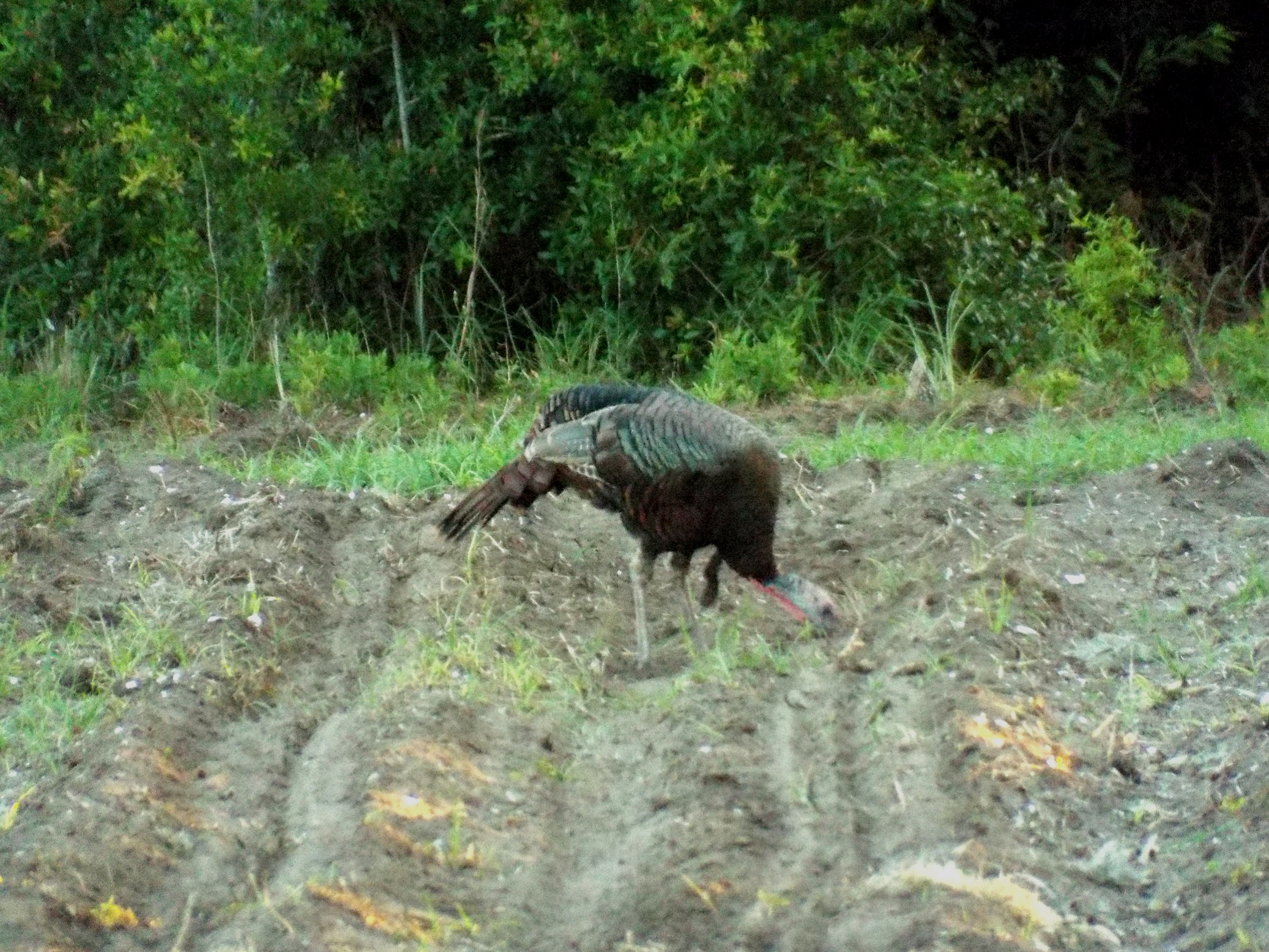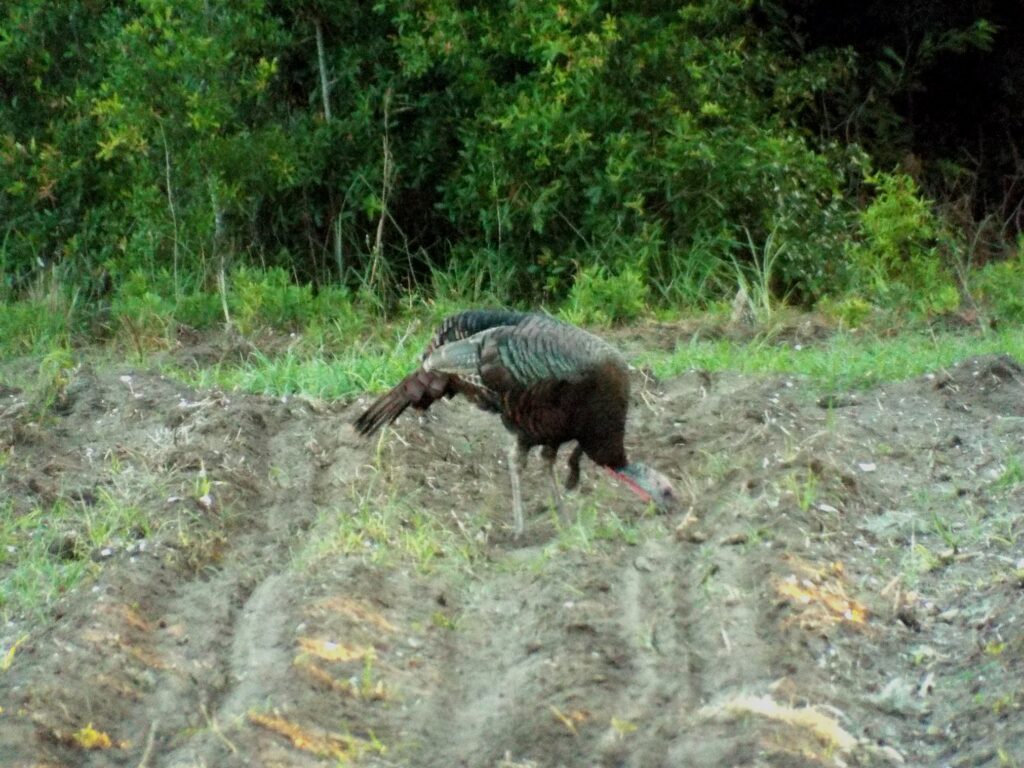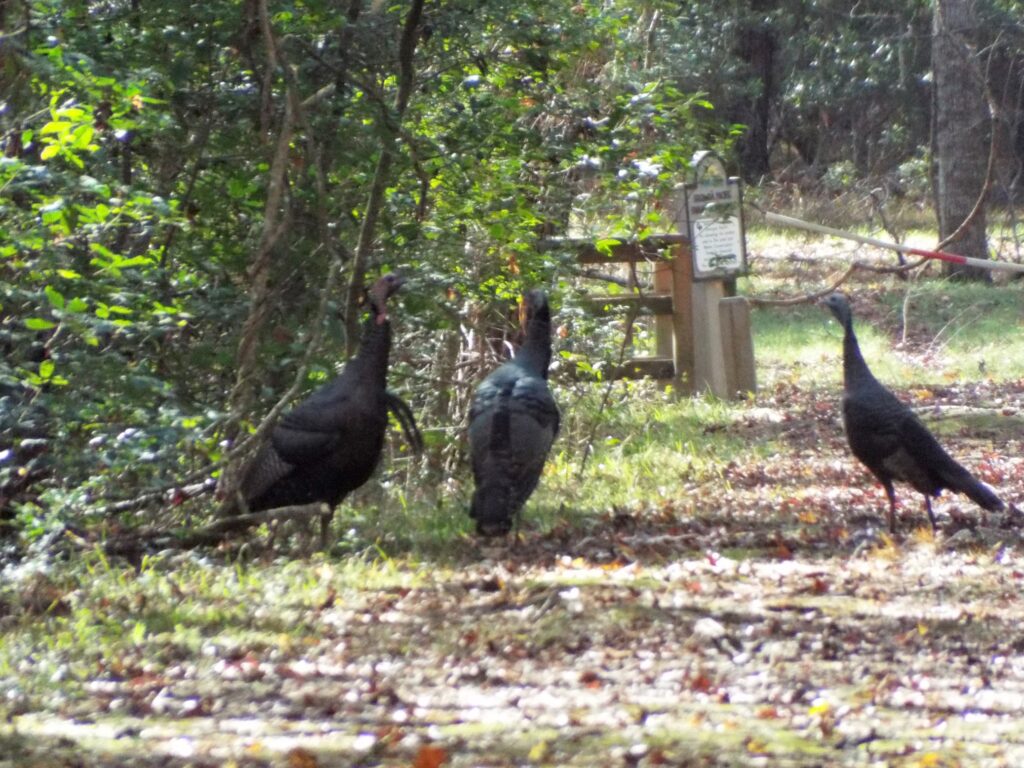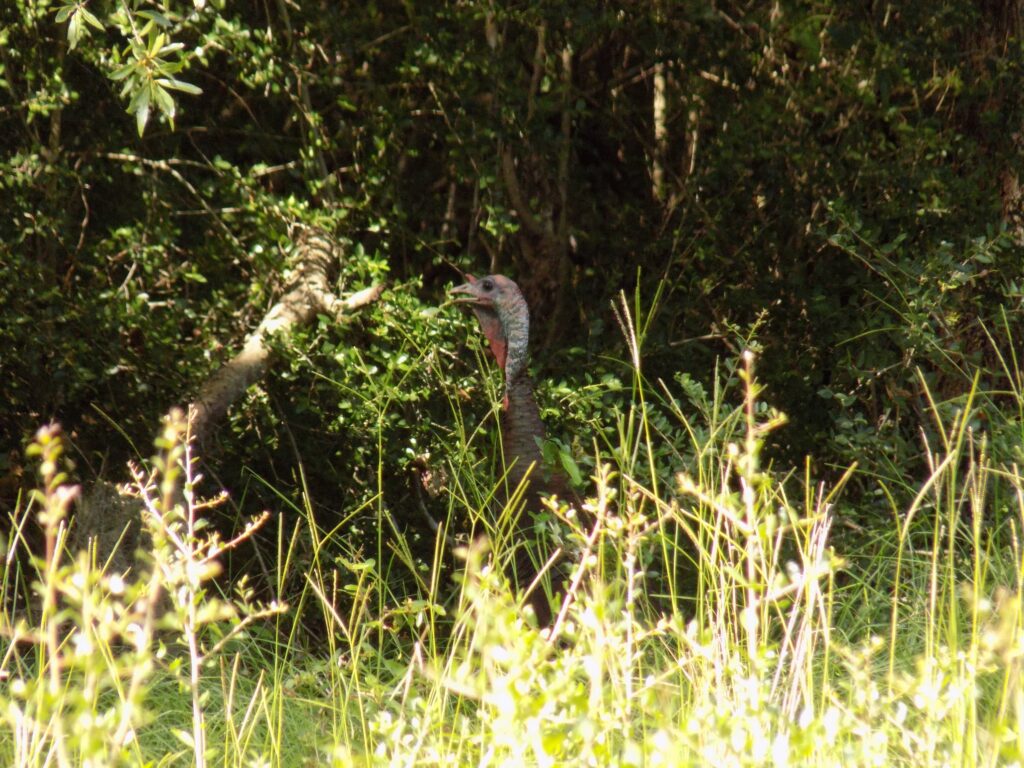






This week for Flora and Fauna Friday we’re taking a look at a bird that’s a familiar sight this time of year, although usually not in its natural setting. This week we’re taking a look at the Wild Turkey (Meleagris gallopavo). The Wild Turkey is the same species as the Domestic Turkey, which is the entrée of choice for Thanksgiving and Christmas dinners around the country. Wild Turkeys were domesticated in Mexico by the Native Americans approximately 2000 years ago. Here is SC, the Turkey season is in Spring, so Domesticated Turkey is what we’re eating.
The Wild Turkey is native to the eastern and central US but has been introduced to all of the lower 48 and Hawaii. Weighing up to 37.5lbs, The Wild Turkey is the heaviest bird in SC. (Domestic breeds can weigh more than twice this.) It comes in at a close second for the heaviest bird in the country behind the Trumpeter Swan, which has been recorded to reach 38lbs. Turkeys belong to the order Galliformes, which includes all of our gamefowl such as Grouse, Quail, Pheasants, and Chickens. Like most Galliforms, the Wild Turkey is heavy bodied and primarily qround-dwelling. Although they prefer to stay grounded, Turkeys are capable of flight and when cornered will escape to the air. They live in forests and roost in trees at night. Their diet consists of seeds, fruits, insects, and other plant material. They primarily eat large nuts like acorns, Beech nuts, chestnuts, pecans, and even Hickory nuts. They don’t crack the nuts or even chew them before swallowing. This is because Turkeys possess a particularly well developed gizzard. The gizzard is a powerfully muscular stomach that is filled with sand and small rocks, called grit, that the birds have consumed. With this organ, Turkeys are able to crush nuts like acorns, chestnuts, and pecans with relative ease and can even grind a Mockernut down until it shatters.
The Wild Turkey is sexual dimorphic. Males are called Toms and females Hens. Toms are larger with a darker, bolder plumage. Toms also have a several distinct physical features. The snood is the fleshy protuberance above the beak of a tom. The wattle is flap of skin below the chin of a tom. Caruncles are the many fleshy bumps on the back and sides of a tom’s neck. The beard is a patch of long, stiff, hair-like, black feathers found on the breast of a tom. Hens are typically smaller, more drab in appearance, and lack many of the growths found on the head and neck of a tom. A Gobbler is simply a Tom that is in it’s breeding plumage and/or performing a courtship display. During courtship a gobbler will retract its neck, fluff up its feathers, and both raise and fan its tail feathers to create an impressive display. Nesting occurs on the ground and juvenile Turkeys are called Poults.
The Wild Turkey is actually a conservation success story. It may not seem like it but their wild populations were almost extirpated from Georgia and SC by the mid-20th century due to unregulated hunting and habitat destruction. In the early 1950s, a biologist and conservationist by the name of “Duff” Holbrook pioneered the use of rocket-netting to capture Wild Turkeys in the Francis Marion National Forest and reintroduce them across the two states. His efforts were extremely successful and now the species can be found in every county of SC and most of Georgia.